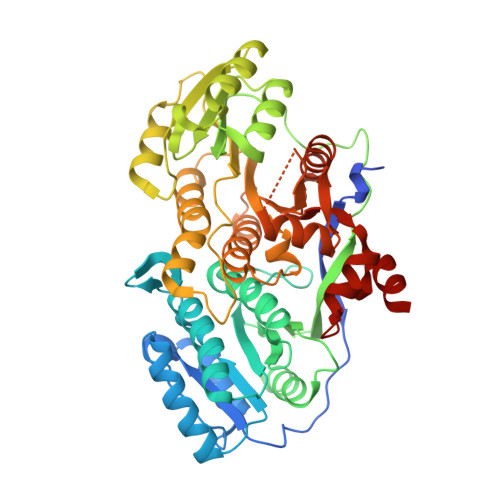Structural and Functional Analysis of A-Type Ketoreductases from the Amphotericin Modular Polyketide Synthase.
Zheng, J., Taylor, C.A., Piasecki, S.K., Keatinge-Clay, A.T.(2010) Structure 18: 913-922
- PubMed: 20696392
- DOI: https://doi.org/10.1016/j.str.2010.04.015
- Primary Citation of Related Structures:
3MJC, 3MJE, 3MJS, 3MJT, 3MJV - PubMed Abstract:
Complex polyketides are characterized by multiple chiral centers harboring hydroxyl and alkyl substituents. To investigate the mechanisms by which these stereocenters are set, several high-resolution structures of the ketoreductase (KR) domain from the second module of the amphotericin modular polyketide synthase (PKS) were solved. This first structural analysis of an A-type KR helps reveal how these KRs direct polyketide intermediates into their active sites from the side opposite that used by B-type KRs, resulting in a beta-hydroxyl group of opposite stereochemistry. A comparison of structures obtained in the absence and presence of ligands reveals an induced fit mechanism that is important for catalysis. Activity assays of mutants of KRs from the first and second modules of the amphotericin PKS reveal the relative contributions of several active site residues toward catalysis and stereocontrol. Together, these results highlight the possibility of region-specific modification of polyketides through active site engineering of KRs.
- Department of Chemistry and Biochemistry, The University of Texas at Austin, Austin, TX 78712-0165, USA.
Organizational Affiliation:

















